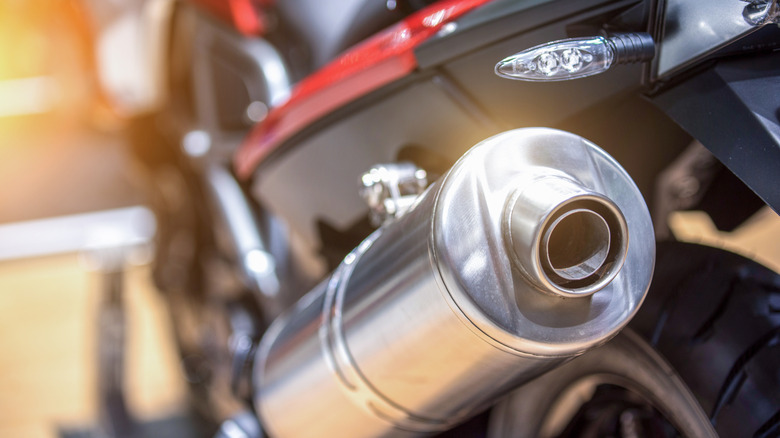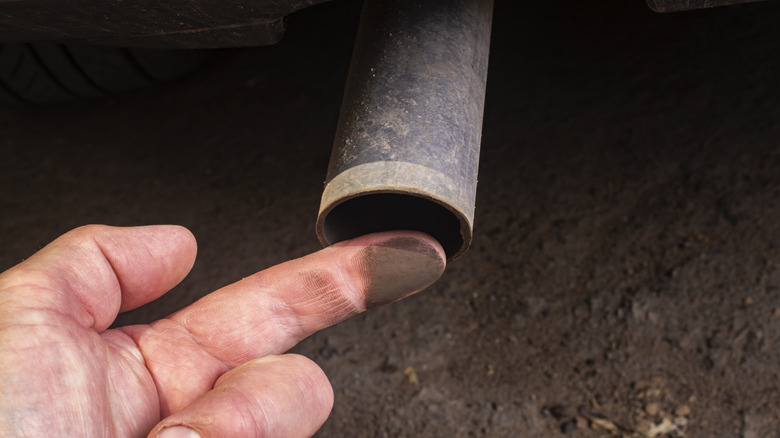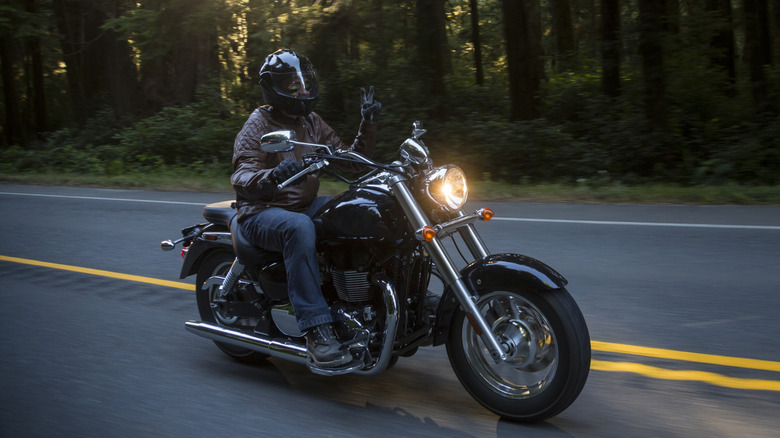Do Motorcycles Need To Pass Emissions Testing?
Although there has been increased attention paid to electric vehicles in recent years, that doesn't mean the regulations for gas guzzlers have been relaxed. Both automobiles and motorcycles still need to follow various emissions rules originally created by the Environmental Protection Agency (EPA) more than three decades ago. These regulations even extend to recreational vehicles such as snowmobiles, ATVs, and dirt bikes.
The testing, undertaken by the National Vehicle and Fuel Emissions Laboratory (NVFEL), is performed by driving the vehicles on a chassis dynamometer in a lab environment that simulates on-road conditions. The exhaust emissions are then measured using chemical analyzers. Additionally, the agency also conducts real on-road analysis using Portable Emissions Measurement Systems (PEMS).
Unless you're performing heavy modifications on your motorcycle, you don't have to worry about following these emission norms because that responsibility is shouldered by manufacturers. If you want to make sure your vehicle has been inspected, however, you can check for the certification label. On motorcycles, the EPA Vehicle Emission Control Information label can be found on the frame, beneath the seat, or within the glove compartment.
What are the emission limits and why are they in place?
All two-wheelers fall under the aegis of Section 202 of the Clean Air Act, which is designed to reduce emissions and now covers chemical pollutants in gaseous form as well as smog and soot. The expanded rules covering motorcycles came into effect starting with model year 1997 and primarily target hydrocarbons, carbon monoxide, and nitrogen oxides.
The updated 2016 EPA regulations measure the permitted amount of emissions in a tiered manner based on the bike's engine size, starting with engines that have less than 50cc displacement. For example, the limit for hydrocarbons, nitric oxide, and nitrogen dioxide for bikes manufactured starting in 2010 that have over 280cc engine displacement is 0.8 grams per kilometer, while the limit for these emissions for motorcycles with engines in the 50-279cc range is 1.4 grams per kilometer. Across the board, the limit for carbon monoxide is 12 grams per kilometer.
These rules are in place due to the health hazards posed by the vapor and gaseous material emitted by motorcycles. For example, the EPA estimates that its most recently updated regulations could prevent 2,200 hospital visits related to asthma emergencies and up to 2,000 premature deaths each year by 2030. Without these regulations, the Federal Register estimates that the amount of emissions highway motorcycles contribute to the atmosphere would more than double nationwide.
What happens when manufacturers don't follow emissions rules?
Engine emissions rules changed car designs as manufacturers were forced to adapt, and they also impacted motorcycle manufacturing, with Harley-Davidson in part switching from carbureted engines to electronic fuel injection because of them. Still, there have been numerous incidents where the violation of these rules has landed motorcycle brands in big trouble, eventually culminating in multi-million dollar fines and modifications to the vehicle's hardware. In one of the most well-known incidents, Harley-Davidson was ordered to pay a hefty $12 million in civil penalties. The settlement occurred because Harley-Davidson sold about 340,000 tuners for enhancing a bike's engine output, which also increased emissions. The EPA alleged that the motorcycle brand also sold over 12,000 bikes that weren't properly tested in the first place.
Another event like this occurred in 2017, when a former Suzuki employee was sentenced to one day in prison for violating the Clean Air Act by submitting false documents that said the company had complied with motorcycle emission standards. The Clean Air Act mostly holds manufacturers responsible for following the emission norms, but motorcycle buyers can also be penalized. Under Section 42 U.S. Code § 7522, it is prohibited for any person to "remove or render inoperative" parts that play a role in emission control of a vehicle. In a nutshell, if you are eyeing any modifications to your motorcycle, be careful that they don't lead to increased emissions.


